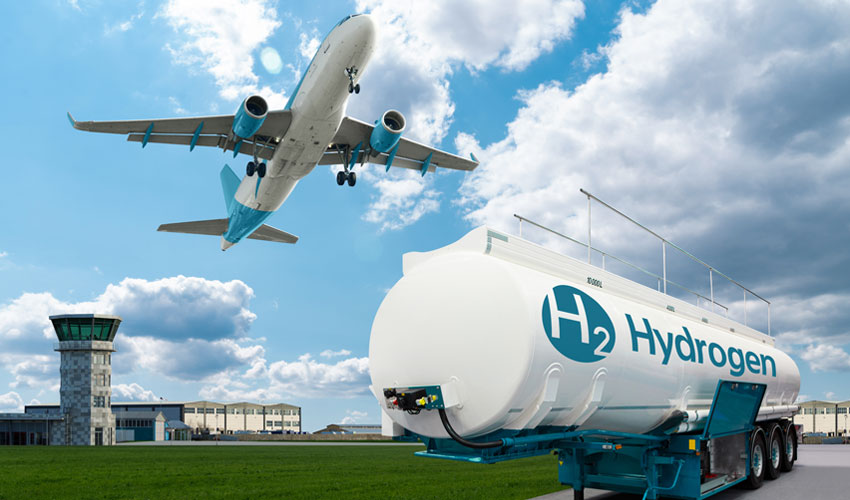October was a month in which the global aviation industry continued to grapple with ongoing challenges relating to demand and capacity, labor shortages, new aircraft production delays, and geopolitical tensions. The industry, however, is motivated and proactively seeking a range of solutions to improve its operations. Among these are consolidation in certain sectors, new ways to enhance the experience of disabled employees, and new sustainability measures. October also saw some of the busiest airports holding on to their recognition on this month’s OAG Busiest Airports in the World list.
Challenges Persist
The aviation industry is still reeling from the so-called four lost years prompted by the global pandemic. With that said, however, airline capacity is positioned to surpass 2019 levels according to Cirium data – evidence of the industry’s resilience. There are spots that continue to challenge the industry and they include:
- Industry profit at 40% less than 2019 levels (International Air Transport Association (IATA);
- Border capacity is down 8% globally from 2019 (Cirium), Trans-Pacific and Europe to Asia capacity down 31% and 17%, respectively (Cirium) and bookings from China to the United Kingdom 43% of 2019 levels (VisitBritain);
- Depressed travel to and from China with cross-border travel is expected to take another year to fully recover according to World Travel & Tourism Council CEO Julia Simpson; China’s traffic with the U.S. and Canada is approximately one-tenth of its pre-pandemic level; round trip flights between the U.S. projected to increase to 24% by the end of October, but a pale number compared to the pre-Covid weekly average of 340 flights;
- The inability for U.S. and European carriers to fly to Russia or use the airspace enroute to Asia;
- Jetliner delivery delays and engine issues force airlines to keep older aircraft in operation for longer periods with the number of aircraft 20 years older having risen by 25% (Cirium);
- More costly labor (30% – 40% higher) and increasing fees on CO2 emissions which could be passed on to passengers further hindering growth (Cirium); and
- Increased jet fuel and debt service costs.
To tackle some of these challenges, some aviation companies are engaging in consolidation measures including acquisitions such as, for example, JetBlue’s efforts to acquire Spirit and Lufthansa’s consideration of acquiring weaker rivals.
Research Underway to Improve Aviation’s Disabled Employees’ Work Experience
The aviation and aerospace industries, under the leadership of the Equal Skies Charter, a collaboration between multiple UK-based aviation organizations, are conducting research with the goal of improving the experience and opportunities for disabled employees within their sectors. This is the first research project launched by Equal Skies Charter whose mission is to ensure “that people with a disability have equal access to the benefits and opportunities provided by the aviation and aerospace industries.”
The Charter has sent a questionnaire to a wide cross section of organizations to extract data on the barriers disabled employees face. “Essentially, we aim to change the industry from within,” said Equal Skies Charter Programme Manager at Aerobility, a charity involved in the initiative. “This is a huge aim that can only be achieved by working collaboratively and positively with the entire industry.”
Among the questions being posed to businesses are:
- The process they have implemented for staff to disclose their disabilities,
- How confident their organization is with assessing and meeting the needs of these employees, and
- What would help them to improve accessibility in their business.
In addition to Aerobility, other Equal Skies Charter participating organizations include: NATS, Bristow, 2Excel Aviation, London Biggin Hill Airport, The University of West London, the UK CAA, Saxon Air, Blackbushe Airport, and Evenbreak.


Striving to Make Hydrogen-Powered Flights a 2035 Reality
Hydrogen South West Director David Eccles is committed to making hydrogen-powered flights a reality by 2035. He sees hydrogen-powered flights as the way towards zero carbon emission flights. What he believes is necessary to achieve this goal are airport infrastructure and cross-sector partnerships.
Hydrogen South West is a consortium comprised of companies from aviation, aerospace, and other sectors that are committed to accelerating the creation of a regional hydrogen economy. The focus is on a region South West of England which is where 14 of the 15 of the world’s most significant aerospace companies, are supported by leading universities and specialist science centers, over 800 companies, aerospace R&D centers and a highly-skilled talent pool.
Among the participating aviation and aerospace giants are Airbus, GKN Aerospace, and easyJet along with regional hubs Bristol Port and Bristol Airport. EDG’s Hynamics and gas network Wales & West Utilities are lending their generation and transportation expertise, while infrastructure specialists Costain and WSP, and water company YTL Wessex Water are also onboard.
Developing adequate airport infrastructure including providing the required space and workforce with the skills to refuel hydrogen-powered aircraft will be critical to the success of the consortium’s mission.
October’s Busiest Airports
OAG has once again published a list of those airports that were among the busiest in the world both domestically and internationally, in the month of October. The list included some which have been on prior lists. Here’s how they stacked up:
- ATL, 5,360,834
- DXB, 4,903,701
- HND, 4,592,410
- LHR, 4,365,818
- DFW, 4,219,118
- DEN, 4,188,906
- IST, 4,053,523
- ORD, 3,860,407
- LAX,3,845,208
- CAN, 3,808,088
Half of the list included U.S.-based airports:
- Atlanta Hartsfield-Jackson International Airport held on to the top berth with 5, 360,834 scheduled seats in October.
- Chicago O-Hare earned the top spot within the U.S. Domestic Airport Megahubs and 8th place on the list of busiest airports for October.
- Denver holds the 6th position; up from 20th on the busiest airports for October.
- Dallas Fort Worth International Airport saw the most significant month-on-month increase in scheduled seats per day at 3%.
After U.S.-based airports and London Heathrow which took 4th place on the world’s busiest airports list, airports located in Asia and the Middle earned most of the other slots among the busiest airports in October.
- Dubai International took the 2nd spot with 4,903,701 seats.
- Tokyo Haneda took 3rd place with 226,592 seats ahead of London Heathrow.
- Istanbul Airport placed 7th this month, down from its 5th place in September with a 6% drop in seats per day.
- Guangzhou, which also experienced a drop in seats per day, placed 10th on the list, down from 7th place last month.
>> How do you think the aviation industry can overcome current challenges? Share your thoughts with us in the comments section.





0 comments on “Aviation Wrap-Up October 2023”